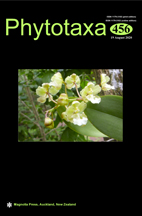Abstract
Arcopilus is a genus recently proposed after the taxonomic restructuring of Chaetomium with only seven described species so far. During the characterization of the microbiome of the Amazonian guarana plant (Paullinia cupana var. sorbilis), nine red pigment-producing strains of fungi were isolated. These strains were identified through morphological characterization and phylogenetic analysis based on the internal transcribed spacer (ITS), 28S large subunit (LSU), partial second largest subunit of RNA polymerase II (RPB2) and β-tubulin (TUB2) regions. Moreover, chemical profiles were obtained via high-performance liquid chromatography coupled to tandem mass spectrometry (HPLC-MS/MS), in which the isolated strains were able to produce significant amounts of the polyketide oosporein. The obtained results indicate the occurrence of a new fungal species, A. amazonicus. Chemical analyses showed that oosporein is overproduced by these strains under laboratory culture conditions.

